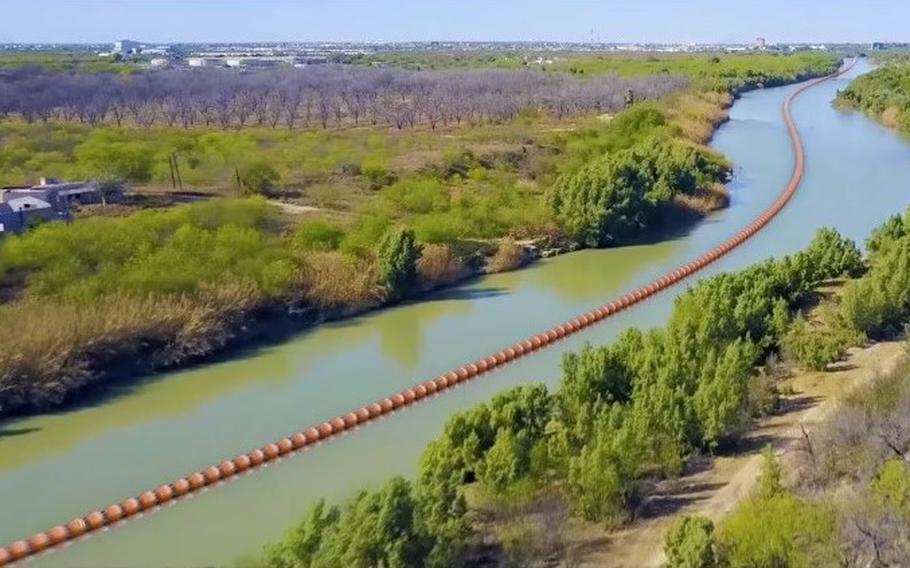Welcome to DU!
The truly grassroots left-of-center political community where regular people, not algorithms, drive the discussions and set the standards.
Join the community:
Create a free account
Support DU (and get rid of ads!):
Become a Star Member
Latest Breaking News
Editorials & Other Articles
General Discussion
The DU Lounge
All Forums
Issue Forums
Culture Forums
Alliance Forums
Region Forums
Support Forums
Help & Search
American History
Related: About this forumAfter a borderland shootout, a 100-year-old battle for the truth
After a borderland shootout, a 100-year-old battle for the truth
Whose story is remembered and celebrated when it comes to the ugly chapters of Texas history?
By Arelis R. Hernández and Frank Hulley-Jones
Illustrations by Raúl Urias
Photography by Desiree Rios
May 15, 2024 at 5:00 a.m.
{snip interactive graphics}
h-t-t-ps://arc-anglerfish-washpost-prod-washpost.s3.amazonaws.com/public/REW2M7Z6IFAKFIRNZMQZOWEKWU_size-normalized.png
Cresencio Oliveira Jr. planned to marry María de Jesús “Chucha” Gutiérrez at the Iglesia Católica Sagrado Corazón de Jesús in Parás, Mexico.
Texas history has branded these three Tejano men as tequila smugglers who met a deserved fate: gunned down in a borderland corral.
But their indignant descendants have long disputed the official story. For generations, they recorded their version of events in narrative, subversive folk songs known as corridos. The men were among many Mexican Americans with roots in South Texas killed under suspicious circumstances by White law enforcement officers who wielded the power of the Texas government in their trigger fingers, they say.
More deeply, the families are challenging the gritty idealism and heroic vision associated with the Rangers, who personify Texas itself. Organized more than 200 years ago to protect 300 White families invited to settle in what was then Mexican territory, they have been portrayed in dozens of movies and TV series as swaggering, no-nonsense lawmen.
“The Rangers had for years and years a network of enablers and fable factory who promoted this image. That’s what Hollywood wanted and what the newspapers of the day wanted, so that’s what survived,” said Doug Swanson, author of “Cult of Glory: The Bold and Brutal History of the Texas Rangers.” “It’s only half true, if that much.”
{snip}
Arelis R. Hernández
Arelis Hernández is a Texas-based border correspondent on the national desk working with the immigration team and roving the U.S. southern border. Hernández joined the Post in 2014 to cover politics and government on the local desk after spending four years as a breaking news and crime reporter at the Orlando Sentinel. Twitter https://twitter.com/arelisrhdz
Frank Hulley-Jones
Frank Hulley-Jones is a designer and developer for The Washington Post. He produces interactive pieces to help audiences engage with complex and important news stories. Twitter https://twitter.com/tobefrankj
Whose story is remembered and celebrated when it comes to the ugly chapters of Texas history?
By Arelis R. Hernández and Frank Hulley-Jones
Illustrations by Raúl Urias
Photography by Desiree Rios
May 15, 2024 at 5:00 a.m.
{snip interactive graphics}
h-t-t-ps://arc-anglerfish-washpost-prod-washpost.s3.amazonaws.com/public/REW2M7Z6IFAKFIRNZMQZOWEKWU_size-normalized.png
Cresencio Oliveira Jr. planned to marry María de Jesús “Chucha” Gutiérrez at the Iglesia Católica Sagrado Corazón de Jesús in Parás, Mexico.
Texas history has branded these three Tejano men as tequila smugglers who met a deserved fate: gunned down in a borderland corral.
But their indignant descendants have long disputed the official story. For generations, they recorded their version of events in narrative, subversive folk songs known as corridos. The men were among many Mexican Americans with roots in South Texas killed under suspicious circumstances by White law enforcement officers who wielded the power of the Texas government in their trigger fingers, they say.
More deeply, the families are challenging the gritty idealism and heroic vision associated with the Rangers, who personify Texas itself. Organized more than 200 years ago to protect 300 White families invited to settle in what was then Mexican territory, they have been portrayed in dozens of movies and TV series as swaggering, no-nonsense lawmen.
“The Rangers had for years and years a network of enablers and fable factory who promoted this image. That’s what Hollywood wanted and what the newspapers of the day wanted, so that’s what survived,” said Doug Swanson, author of “Cult of Glory: The Bold and Brutal History of the Texas Rangers.” “It’s only half true, if that much.”
{snip}
Arelis R. Hernández
Arelis Hernández is a Texas-based border correspondent on the national desk working with the immigration team and roving the U.S. southern border. Hernández joined the Post in 2014 to cover politics and government on the local desk after spending four years as a breaking news and crime reporter at the Orlando Sentinel. Twitter https://twitter.com/arelisrhdz
Frank Hulley-Jones
Frank Hulley-Jones is a designer and developer for The Washington Post. He produces interactive pieces to help audiences engage with complex and important news stories. Twitter https://twitter.com/tobefrankj
2 replies
 = new reply since forum marked as read
Highlight:
NoneDon't highlight anything
5 newestHighlight 5 most recent replies
= new reply since forum marked as read
Highlight:
NoneDon't highlight anything
5 newestHighlight 5 most recent replies
After a borderland shootout, a 100-year-old battle for the truth (Original Post)
mahatmakanejeeves
May 2024
OP
interisting read . photo is taking time to load.. i am at the end of dsl high speed . one step back i goto dial up.
AllaN01Bear
May 2024
#1
You have to understand: Texas has so much to answer for, this wasn't hidden so much as it was ...
marble falls
May 2024
#2
AllaN01Bear
(26,372 posts)1. interisting read . photo is taking time to load.. i am at the end of dsl high speed . one step back i goto dial up.
a lot of things in this country glossed over .
marble falls
(66,989 posts)2. You have to understand: Texas has so much to answer for, this wasn't hidden so much as it was ...
... a drop in the constant drip, drip, drip of outrages piled up. What can one expect from a state that put a barrier on the Rio Grande with saw blades?


